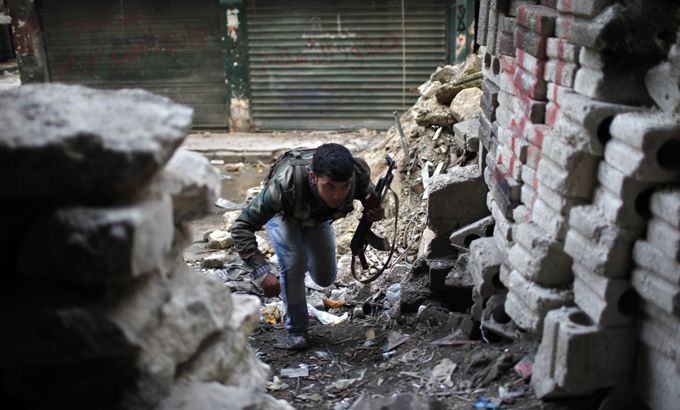Children ‘killed’ in Syria army tank attack
UK-based activists claim eight children among at least 20 total dead from tank shells in northern province of al-Raqqa.

At least 20 people, including eight children, have been killed after Syrian army tanks shelled a village in the northern province of al-Raqqa, an activist group has said.
Dozens of other civilians were also injured by the government’s attacks in the village of Qahtania on Wednesday, the Syrian Observatory for Human Rights reported.
“At least 20 people, among them eight children and three women, were killed in shelling by regime forces of farmlands in Kahtaniyeh village, west of the city of Raqqa,” the UK-based group said.
Amateur video posted online by activists and distributed by the Observatory showed several bloodied bodies, including at least one of a child, laid out on blankets in a house.
“Dozens of people have been injured in farmlands of Kahtaniyeh, among them a whole family,” according to activists in Raqqa.
Raqqa has seen an escalation of violence in recent months after rebels have launched an assault to oust regime forces from several areas of the province, strategically located on the Turkish border.
Rami Abdel Rahman, The Observatory’s head, said the casualties were caused by tank fire and that the victims were from farming families.
“Just to be clear, there are no Al-Nusra Front jihadists or any other well-organised rebel groups there. The victims were just farmers,” Abdel Rahman told the AFP news agency.
Al Jazeera’s Mohamed Vall said: “The government is systematically killing people under rebel control sending the message of certain death.
“We have seen an intensification of fighting in Syria today. It comes at a time when the UN and Arab league envoy Lakhdar Brahimi is in Damascus. He will continue his stay till the end of the month in a bid to try and bring the two sides to a peaceful solution on the negotiating table.”
Vall added: “Instead of the fighting subsiding, we are seeing the two sides stepping up the violence. Perhaps to prove one has the upper hand than the other and that any solution should be according to their conditions.”